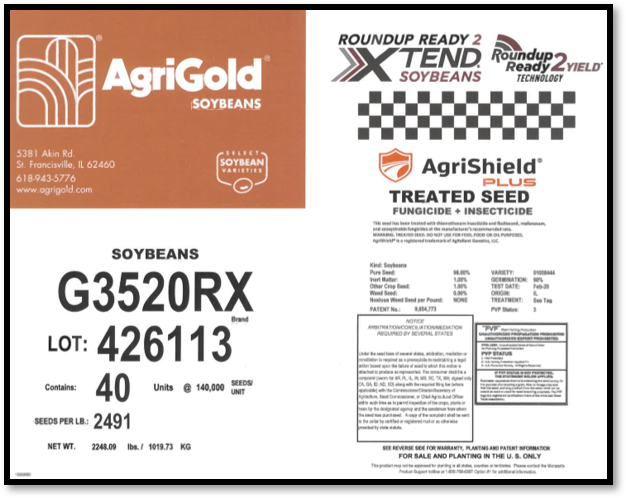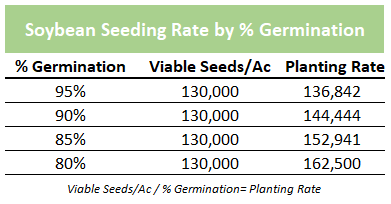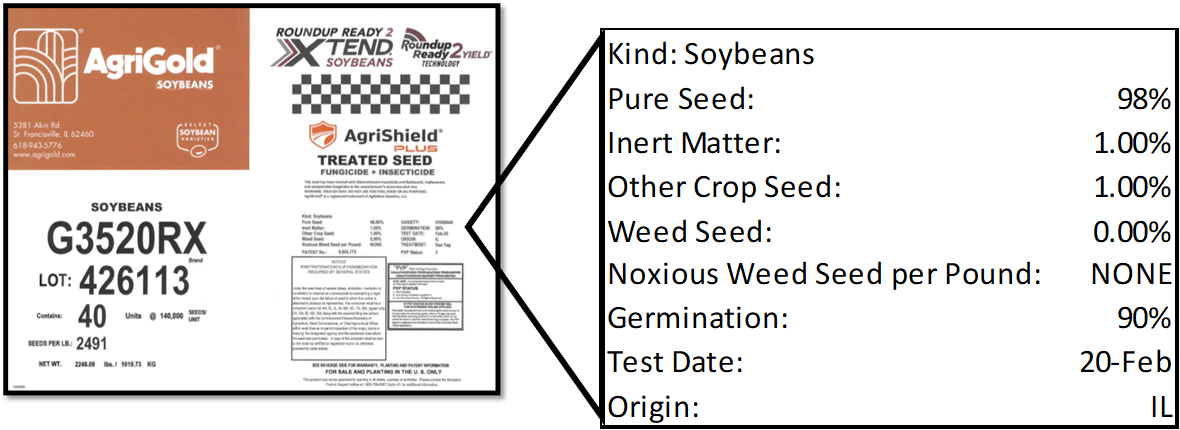A lot of time is spent by growers selecting seed for the coming year, determining proper field placement and managing agronomic decisions. Industry also spends a great deal of time producing ample high-quality seed. When it comes to validating what a grower is getting, it’s important to review the soybean seed tag for each soybean variety. Seed tags are a great resource for a grower to better understand what they are planting. For example, herbicide traits, seed treatment and the number of seeds/unit are all found on the tag. Regardless of how seed is delivered to a grower—by bagged unit, mini bag, bulk box or true bulk of soybeans—you should be given a seed tag that matches the purchased products.
Below is additional technical information about the seed quality and production that can be found on the seed tag.
 Germination:
Germination: The percentage of seed that germinates in a set period of time under specific lab conditions. It determines the capability of a seed lot to produce normal seedlings under favorable conditions.
Pure Seed: Purity is the percent of seed that is the stated species. For example, a purity of 98% means that 2% of the unit content is inert matter.
Inert: The percent by weight of chaff, sticks, dirt and other debris. High inert percentages can affect the seed flow through a drill.
Noxious Weeds: Each state defines noxious weed species that are restricted or prohibited, as well as the maximum allowable amount of seed of restricted noxious weeds.
Origin: The location where seed was grown.
Test Date: The month and year of the germination test.
So how do you use this information?
- As soybean herbicide traits become increasingly complicated, it’s very important to double check these seed tags to make sure you received and are planting the right product. This small task could offset a very costly mistake. An extra layer of caution could be providing a copy of one’s seed tags to the herbicide applicator to verify the trait. As a CCA, I have walked many situations where the farmer and herbicide applicator were not on the same page with the trait being planted and the herbicide being sprayed.
 When making a seeding rate decision it’s important to understand the percent germination and adjust the planting rate to insure the desired viable seeds per acre. Example: 85% , 90 %, 95% and 98% germination.
When making a seeding rate decision it’s important to understand the percent germination and adjust the planting rate to insure the desired viable seeds per acre. Example: 85% , 90 %, 95% and 98% germination.
 Germination: The percentage of seed that germinates in a set period of time under specific lab conditions. It determines the capability of a seed lot to produce normal seedlings under favorable conditions.
Germination: The percentage of seed that germinates in a set period of time under specific lab conditions. It determines the capability of a seed lot to produce normal seedlings under favorable conditions.
When making a seeding rate decision it’s important to understand the percent germination and adjust the planting rate to insure the desired viable seeds per acre. Example: 85% , 90 %, 95% and 98% germination.

 When making a seeding rate decision it’s important to understand the percent germination and adjust the planting rate to insure the desired viable seeds per acre. Example: 85% , 90 %, 95% and 98% germination.
When making a seeding rate decision it’s important to understand the percent germination and adjust the planting rate to insure the desired viable seeds per acre. Example: 85% , 90 %, 95% and 98% germination.


 and then
and then